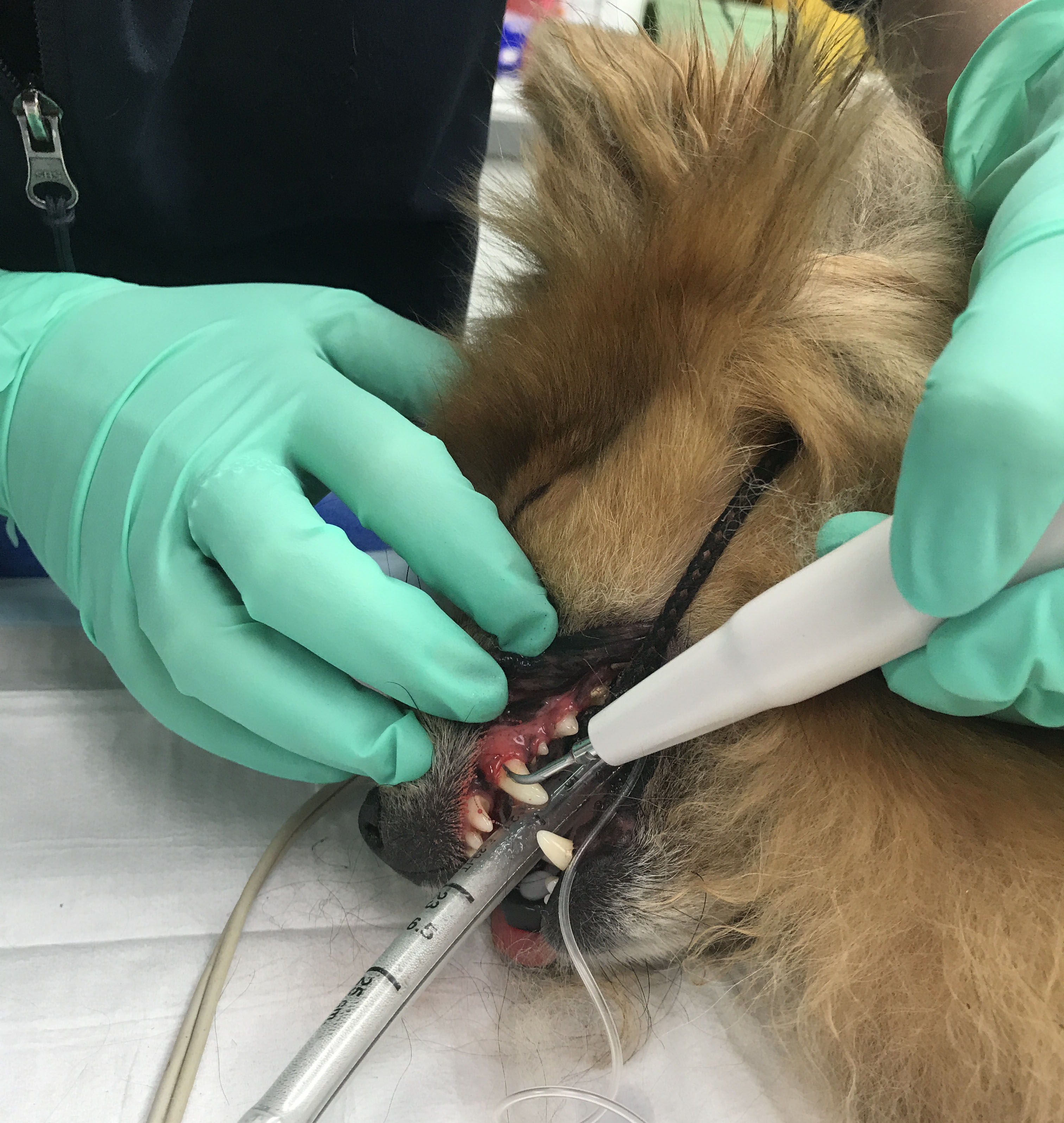More than 85% of dogs and cats over four years old have some form of periodontal disease. There are various signs you can look out for such as bad breath, discoloured or loose teeth, excessive drooling, inflamed or receding gums, pain when handled around the mouth and/or change is behaviour. Leo, a 6 year old Pomeranian, was suffering from dental disease and was admitted for a dental.
Dental disease or periodontal disease is caused by an infection called plaque. Plaque is made up of food particles, saliva and bacteria. It sticks to the tooth surface and if not removed will calcify into tartar (or calculus).
This takes place above and below the gum line and over time can lead to the destruction of the supportive tissues and jawbone, resulting in bad breath and eventual loss of teeth. Even the early stages of plaque, tartar and gingivitis can be painful for our pets. If these problems develop into low-grade, long-term bacterial shedding from a chronically infected mouth, it will eventually find its way into the blood stream and then into essential organs like the heart and kidneys


In the majority of pet’s lives, there comes a time when their teeth may require veterinary treatment over and above their regular examinations. A dental treatment involves a general anaesthetic and a full dental examination, including scaling, both ultrasonically and by hand, and then finishing with a polish. A very similar procedure used by your own dentist.
Leo had grade 2 dental disease with moderate tartar (mineralized plaque and bacteria) and gingivitis present. Leo was sedated and then anesthetised to have his mouth fully examined. Leo required heavy scaling to remove the build up especially on his molars, and his dental was finished by a complete dental polish, leaving his mouth bright, shiny and smelling fresh.






